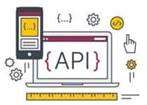A good use case for this application is whenever you wish to give certain customers inside your group an easy and effortless approach to entry and consider cluster assets. It helps scale back the complexities of managing users, and tokens, and setting up RBAC permissions. To run a container in Kubernetes, you must initially create a pod. A pod is basically a gaggle of one or more containers with shared storage/network assets. Unlike Docker, in Kubernetes, the smallest deployment unit is the pod, not the container.
To create these photographs, we’ll use Docker, which permits us to deploy applications inside isolated Linux software program containers. Docker is prepared to mechanically construct photographs utilizing directions from a Docker file. You ought to save this to a YAML file and execute kubectl create -f to deploy the pod.
To develop a Kubernetes operator, you’ll need entry to a working cluster. If you do not have one, it’s simple to spawn a cluster using minikube. The Kubernetes-client for Python consists of a extensive selection of API endpoints you must use to work together with a Kubernetes cluster. You can discuss https://www.globalcloudteam.com/ with the full record here to see what strategies can be found and you can use them in your Python software. This should create a model new folder in our project known as residence with a special set of information.
At the top of the tutorial, we may scale and distribute site visitors to our service using a load balancer. In part I of this tutorial, we developed a Python API then we used Docker and Docker Compose to containerize the applying and create a growth environment. Using a Docker registry aside from Docker Hub to retailer images requires you to add that container registry to the native Docker daemon and Kubernetes Docker daemons.
This tutorial shows you tips on how to run a sample To-Do app in Kubernetes with CockroachDB Dedicated because the datastore. The app is written in Python with Flask as the web framework and SQLAlchemy for working with SQL knowledge, and the code is open-source and forkable. To summarise, we demonstrated how to interact with Kubernetes Deployments and Services utilizing Python and the official Kubernetes Python client. You can now use these examples as a starting point to construct more complicated interactions and automation for your Kubernetes workloads. Before we study tips on how to create these permissions, we create a Docker picture and deploy the controller to the cluster. You can discover the complete definition of the chaosagents.blackadder.io and the manifests for creating brokers in the source code repository accompanying this text.
Step 1 Authorize Your Local Workstation’s Community
However, the easiest way to create pods is by creating a deployment object that will delegate the pod creation to a reproduction set. Generally, kubectl instructions are used to create, listing, and delete the Kubernetes resources, however for this text, we put on a developer’s hat and use the Python means of doing things. In this article, we learn to create, handle, and work together with Kubernetes assets using the Kubernetes’ Python library.

Golang is another programming language that is quickly gaining popularity inside the DevOps group. You can even take a look at Kodekloud’s Golang course right here to get began. In different words, a deployment file is a declarative update for pods and reproduction sets.
Very early on in the Kubernetes developers realized that permitting to extend Kubernetes is vital to successful adoption. Version 1.7 added the flexibility to define ThirdPartyResource, which allowed extending Kubernetes. These had been later named CustomResourceDefinition in version 1.8 and onward. If you’re looking to be taught extra about Python or Kubernetes, KodeKloud presents a extensive variety of DevOps programs that cover these topics.
Step 1 Begin An Area Kubernetes Cluster
Milind has labored on various Databases, Data warehouses, and builds ETL & ELT pipelines and different DE tools. He additionally likes to play video video games and watch anime in his free time. There are quite lots of ways this article might have been written, however as we conclude, it’s fairly evident that we now have barely scratched the surface.
- This will trigger a failure in non-exec/attach calls.
- You are lastly ready to get the appliance running in Kubernetes.
- Deployments are Kubernetes assets that describe the desired state for an software, together with the number of replicas, container images, and update technique.
- You ought to save this to a YAML file and execute kubectl create -f to deploy the pod.
- However, there are a ton of functionalities you’ll have the ability to add to your web application similar to creating or modifying objects in your Kubernetes cluster.
Personally, I like using it, because it feels more pythonic than the official Python Client for Kubernetes. Then, we assign the values from the list_node technique to a variable named nodes. Afterward, we cross that worth within the render function as a data parameter.
Terraform Eks Module – Provision Eks Cluster With In
In this text, we are going to discover the Python Kubernetes Client, a robust tool that permits you to interact with Kubernetes clusters seamlessly. Whether you’re a seasoned Kubernetes professional or a newcomer to the world of container orchestration, this information has got you coated. Let’s dive in and discover how the Python Kubernetes Client can enhance your Kubernetes expertise.

Before you connect to your CockroachDB Dedicated cluster, you have to authorize your community (i.e., add the public IP handle of the workstation to the allowlist). Alternatively, Minikube can be used, but we won’t be overlaying it here. That is as a result of the service account for the namespace has no permissions to record ChaosAgent objects. I might be utilizing pykube-ng, which is self-described as a lightweight client library for the Kubernetes API.
“Support” means we expect users to be working that model in manufacturing, though we might not port fixes again earlier than the latest minor version. For example, when v1.three comes out, v1.zero kubernetes based assurance will not be supported. In according to Kubernetes support policy, we anticipate to help three GA major releases (corresponding to a few Kubernetes minor releases) at a time.
Our operator will randomly kill pods and write garbage inside ConfigMaps. In addition, it’ll scale deployments to many replicas randomly. Kubernetes is de facto the platform for deploying functions utilizing Linux containers.
Creating Operators permits us to increase Kubernetes in ways that match our needs, and which the original developers of Kubernetes might need not considered. We can add different packages and options to our Python project by putting in them through pip. We’ll be using pip to install different packages we’d like so as to bootstrap our project.

This will create all the mandatory recordsdata to bootstrap your Django project. Now, let’s go forward and create our project folder and name it a cluster. Let’s go forward and proceed to create our Python internet software. One of the neat features of Kubernetes is to permit programmatic entry to the Kubernetes API.
Kubernetes Overview
CRDs allow you to increase the Kubernetes API and define your customized assets. The Python Kubernetes Client helps CRD administration, permitting you to create and work together with custom assets effortlessly. By following the steps outlined in this article and using the Python Kubernetes SDK, you probably can automate the deployment and administration of your kubernetes purposes. This will streamline your workflows, reduce the chance of human error, and improve total effectivity. Deployments are Kubernetes resources that describe the desired state for an software, together with the number of replicas, container photographs, and update technique. This simple project just offers you an concept of what’s attainable when using the Kubernetes shopper along with your Python net utility.
